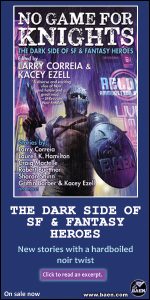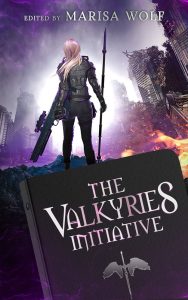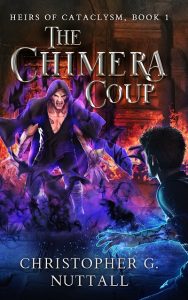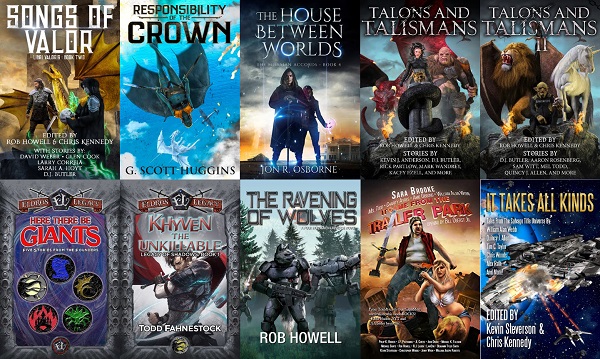I’m back from 20Books and I’ll start with saying it was an amazing trip.
I went with two overall goals: Gain the tools to level up personally and to level up New Mythology Press. Mission achieved.
Sunday night is when things sort of start. I say “sort of” because panels start on Tuesday, but networking and reconnecting is a huge part of the event.
I got a chance to hang out with some of the North Texas Troublemakers on Sunday. This is a collection of some skilled writers and artists from around Wichita Falls. They’re good folk and I don’t get a chance to really hang out with them much, but several of them were at the con.
One was Dorothy Grant, who I’ve crossed paths with before, but mostly knew online. This was a chance to get to know each other in real life. This last bit, by the way, is a huge theme of 20Books for me.
Another was C.V. Walter, an successful romance writer, especially her Alien Brides series. I’m trying to add a bit more of those tropes to my writing to broaden my skill set, and we had a good conversation about that. I put some romance in The Door Into Winter, and she agreed to take a look at what I did and see how I can punch that up a notch.
Also, expect to see her in an upcoming anthology as she’s got some great ideas and plans for valorous deeds. That’ll be 2024.
Monday started with the big vendor show. A bunch of people who offer a variety of services to help authors write. I found some intriguing stuff I’ll be digging through in the upcoming weeks.
I did have a chance to meet Jake of J Caleb Designs. He’s the artist for so many of New Mythology’s Books. He’s talented, creative, and a true professional. I can’t recommend him enough.
The rest of Monday was more networking and hanging out with a bunch of people. I had a great conversation with a friend who I’ve not really hung out with much in real life.
A crew of CKP folk ended up at Giordano’s, a true deep dish pizza, and we had a bunch of chats about this and that pertaining to a various CKP plans.
Tuesday started with a D&D game hosted by Luke Gygax. If you’re familiar with D&D, you might recognize the name. Yes, he’s related. In fact, he’s one of Gary’s kids.
I actually gamed with him twice, having a session both Tuesday and Thursday mornings. We had a blast, but from a professional standpoint, it was a great chance to connect with a few individuals more than we might have otherwise.
I’m certainly going to keep track of Gaxxworx, Luke’s company, and the setting they’re creating for D&D.
After that I hit Dave Butler’s editing for muscular prose. This was a very useful session as I not only learned new things, it also codified a number of things I’d sort of known but hadn’t ever lined out explicitly.
I’ve already started to put some of those things into use. Definitely a chance for me to level up.
Side note on Dave. We’ve been friends for a bit, but at most cons we don’t have time to actually sit and chat. We had a couple of chances, especially dinner on Thursday. He’s a great dude, and I look forward to hanging out again.
Dave was also hanging out with David West and Brad Torgerson. These are two writers I’ve interacted with on the internet, but hadn’t met in real life. Unfortunately, Brad came down with an illness, so we didn’t see much of him later in the week.
I especially wanted to meet with West, as he’s been pushing Weird West stories. As I desire my Libri Valoris anthologies to be broadly ecumenical in fantasy subgenres, I wanted to make sure he knew that Weird West fantasies are absolutely acceptable for these.
Wednesday was more panels, in particular Larry Correia’s one on action scenes. If you’ve read Larry’s stuff you know he makes these pop, and I got a few tips and tricks I’m looking forward to adding to my stuff.
Speaking of Larry, I also got to hang out with him more than I’ve done before. We had a fun lunch at the French restaurant close to the convention including Kacey Ezell, Nathan Balyeat, Mike Massa, and Larry’s wife, Brigit. Cheese was the biggest topic of conversation.
Also, it was great to actually get a chance to chat with Massa, another talented writer I’ve admired for a while but barely known in real life.
The other really useful session on Wednesday was Bryan Cohen’s Less Time, More Readers panel. This had a number of specific ideas on being productive.
The basic theme here was consistent mediocrity. Doing a little thing day after day after day will add up more than big days. We already kind of know this because we try to write some every day, but he pushed for us to do this on everything we do.
He also said it’s best to cut down on the things we try to do, but again, stick with them day after day, week after week. This might seem counter-intuitive but it struck a chord with me because it’s exactly what I talk about to people thinking about joining the SCA.
Many new to the SCA are intimidated by all the stuff. The great outfits, the bling, good shoes, chairs, wooden chests, and at camping events, tents and such-like things. They feel like they can’t do this because they can’t get all this stuff.
The thing is, no one should have all this stuff at the start. I started with tennis shoes, sweats, and plain T-tunic. This is still sufficient to start with. I had bag chairs, not wooden ones. Everything we used was modern.
But over the 25 years I’ve accrued this and that periodically. I made a chest, bought a chair, traded for garb, etc. I have a pretty good kit, but only after doing a bit here, a bit there, over all this time.
I need to do that with my work. Many, including me, often look at established writers and struggle to do all the things they do without remembering they didn’t do all those things at the start, but did some then added on as they got better.
I need to focus on certain things and get consistent with them. Then, when they’re programmed in, add something else. You can expect to see a few changes along those lines in the upcoming months. Some will be behind the scenes, but it will all be more calculated, more planned to do less, but more consistently.
Those were the three panels I got the most out of, though there may be more. I’ll be watching a few of the others that conflicted with other plans. This con, more than most, had productive things opposite other productive things.
Thursday, after the gaming with Luke Gygax, was mostly networking. In particular, I had a chance to really hang out with James Artimus Owens, a writer and artist who’s also one of the main people at Superstars. His class on cover art at Superstars was one of the best things I did there and it was good to actually get to know him a bit.
This conversation actually gave me a chance to consider the relative merits of both Superstars and 20Books. They’re both great for up-and-coming writers, but they have slightly different aims. 20Books seemed to have a much more granular, detailed approach to the business side of things, especially for indie writers who already have a few things out there. Superstars is better for newer writers, and also for those who lean toward tradpub.
Short version: both are great, but one can be better than the other depending upon your goals and circumstances. As both are expensive to attend, I suggest studying each to find the best fit for you. Most of us can’t afford to attend both in a given year.
It seemed like 20Books had more aimed at my specific needs, but again, this is something you need to determine yourself.
Anyway, the event ended on Friday with the RAVE event. This was an open-to-the-public sales event. There weren’t a ton of shoppers not part of the con and we didn’t have many sales. However, this was a chance for people to show off what they had.
I had a great chat with a number of writers, including some I expect you’ll see coming out in New Mythology down the road.
Overall, it was a fantastic convention and I achieved my goals. I’ve got more tools in my toolbox, more connections in the industry, and more ideas to push my stuff to the next level.
I’ll definitely go back.





